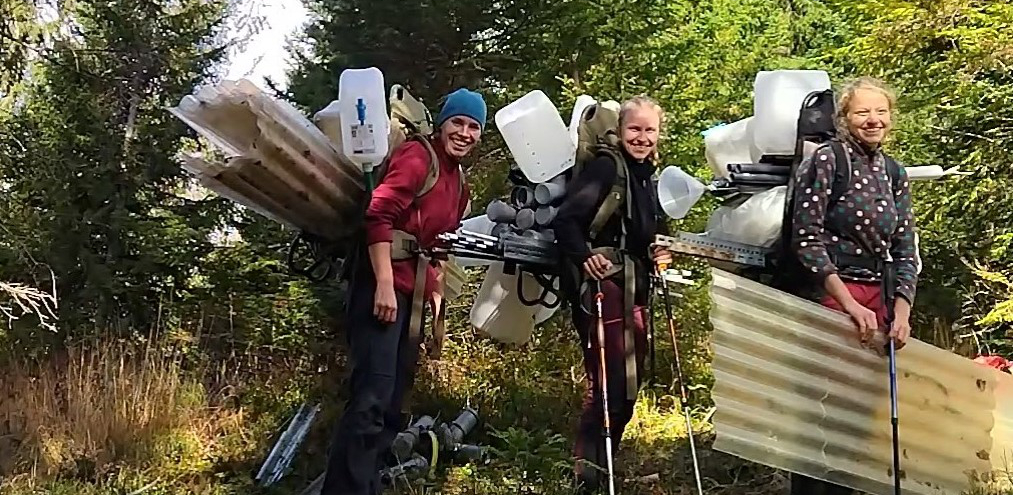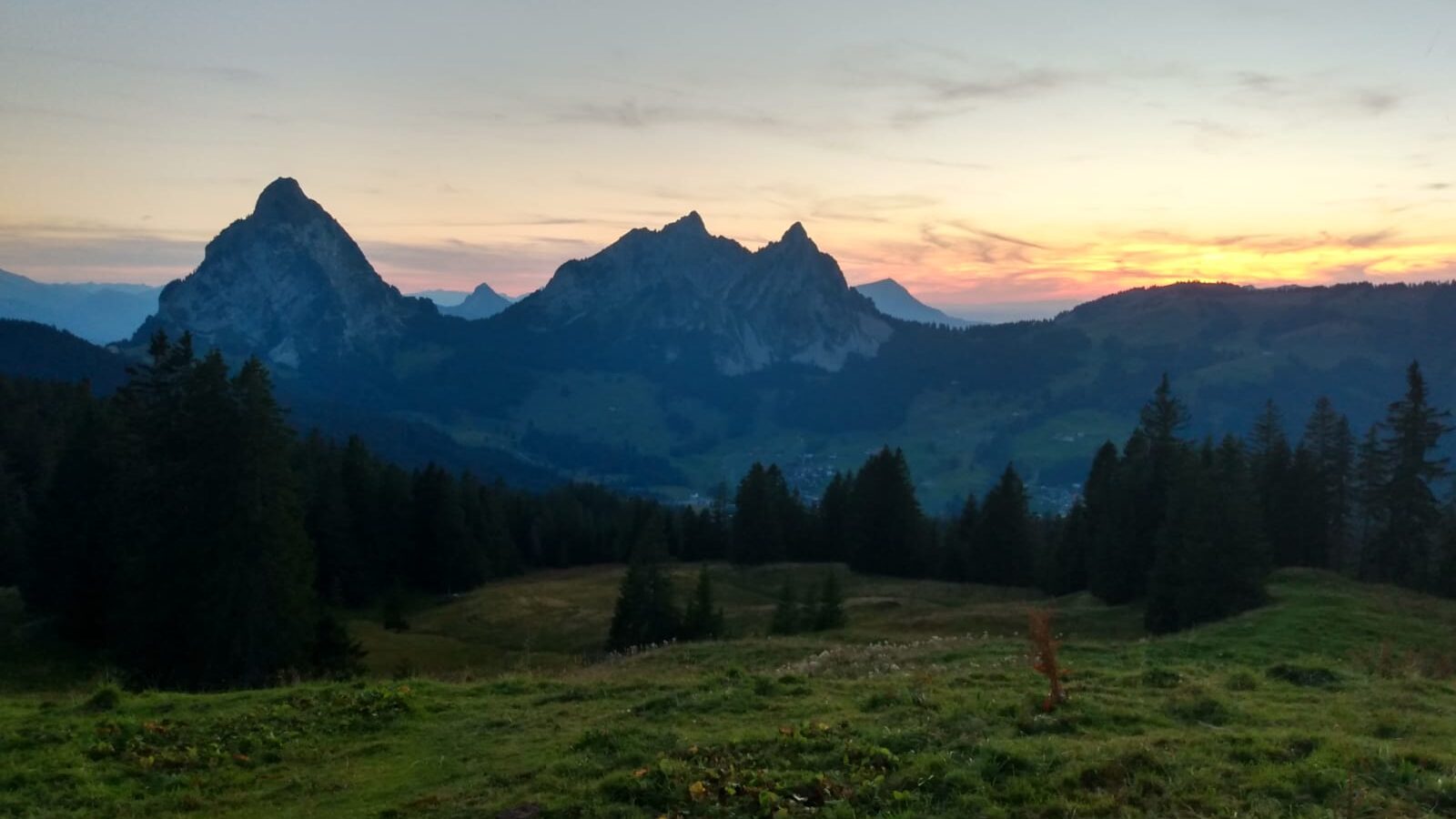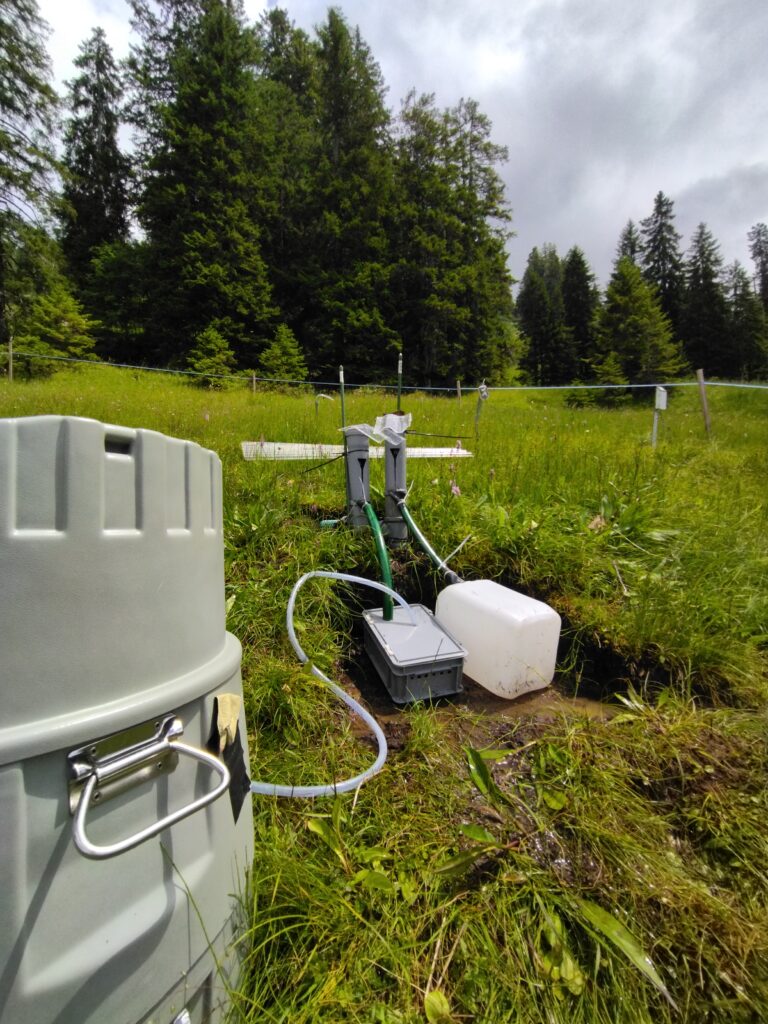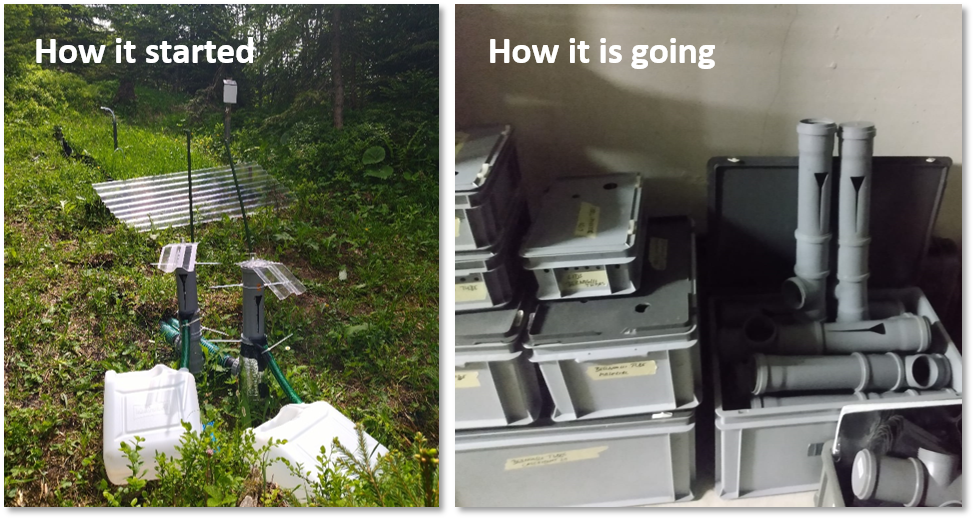
From thrilling outdoor life to boring winter quarters
Hi everyone, my name is Tube Bernoulli, a new member at the GIUZ. Well, not exactly a member like all the others who write blogs here. I am an instrument for measuring surface runoff rates.
This summer, I had an awesome time in the Studibach in the Alptal. Each day I looked at the Grosser and Kleiner Mythen and in the evening enjoyed the sunset. When the weather was bad and the view of the Mythen was hidden, I did not get wet from the rain but just heard the comfortable knocking sound it made on the little roof that Anna Leuteritz and Victor Gauthier, two PhD students at GIUZ, put above me. Above all, this was the time to get serious about work.

Me and my 31 friends collected the overland flow or the shallow subsurface water from their runoff plots. Our friendly v-notch (“nose”) is shaped in such a way that there is a direct relation between the water level (which was measured with a pressure transducer) and the outflow. Last spring, Marc Morlang, a BSc student in the Earth System Science program, did some tests and found that we are not just friends but twins and have exactly the same V-notch, as it was designed by our technician Thomy Keller. Because of the relation between water level and outflow, Anna and Victor now know exactly how much overland flow or subsurface flow comes from the plots and when this occurs. Sometimes, this water was routed via a smaller hose to containers or an automatic water sampler, so that Anna could take water samples and determine the chemistry of the two flow pathways.

Let no one say our work was boring! We had some real surprises for Anna and Victor. I will share two of them with you: Overland flow occurred much more frequently than they anticipated, and could sometimes continue for more than an hour after the rain had stopped. The electrical conductivity, a measure of the amount of dissolved solutes in the water, also varied a lot. This suggests that at some plots the overland flow water contained mainly rainfall, whereas at other plots it was mainly soil water that exfiltrated (=flowed out) from the soil.

In October, we had to leave the gorgeous place. They said that we would not like the snow and promised that we can go back to the Alptal once the snow has melted. We were put in a container in a storage room on Irchel campus. I am not complaining, but I have had better times. Most of the time, we are sitting in the dark and when the light goes on, we only have a view of boxes on the shelves across from us. But we are also tired and will go into hibernation as soon as this blog text is finalised. That way, we will be top-fit and ready for action when Anna and Victor bring us out to the Alptal again in May 2023. Of course, any visitors would be welcome!
More about me
| I am named after Daniel Bernoulli because I am based on the Bernoulli principle. He was one of the mathematically gifted members of the famous Bernoulli family, who fled from Antwerpen to Basel, where there is still a street named after them. However, I was designed by Stewart et al. (2015), slightly modified by Thomy Keller, and created in the Physics workshop at UZH. |

Ilja van Meerveld
